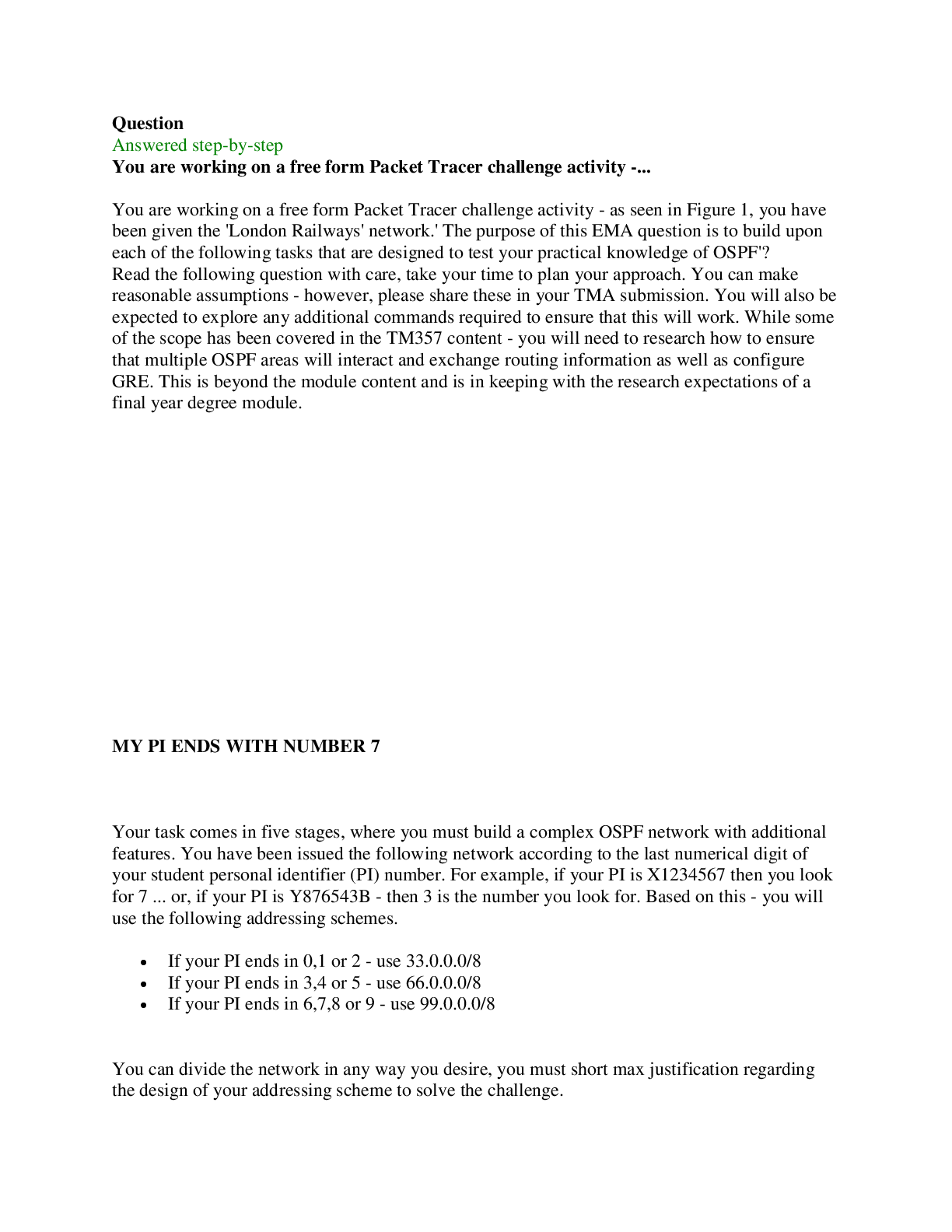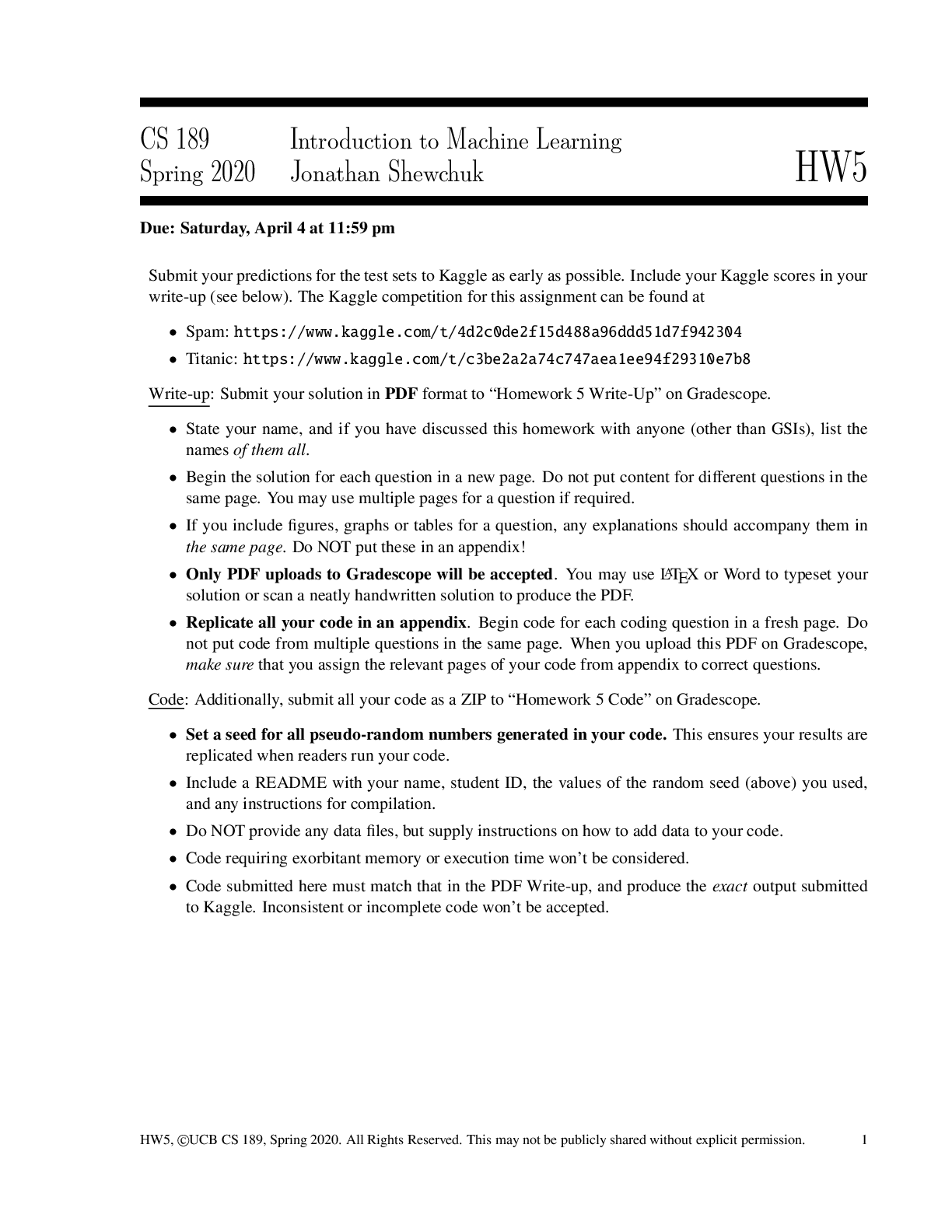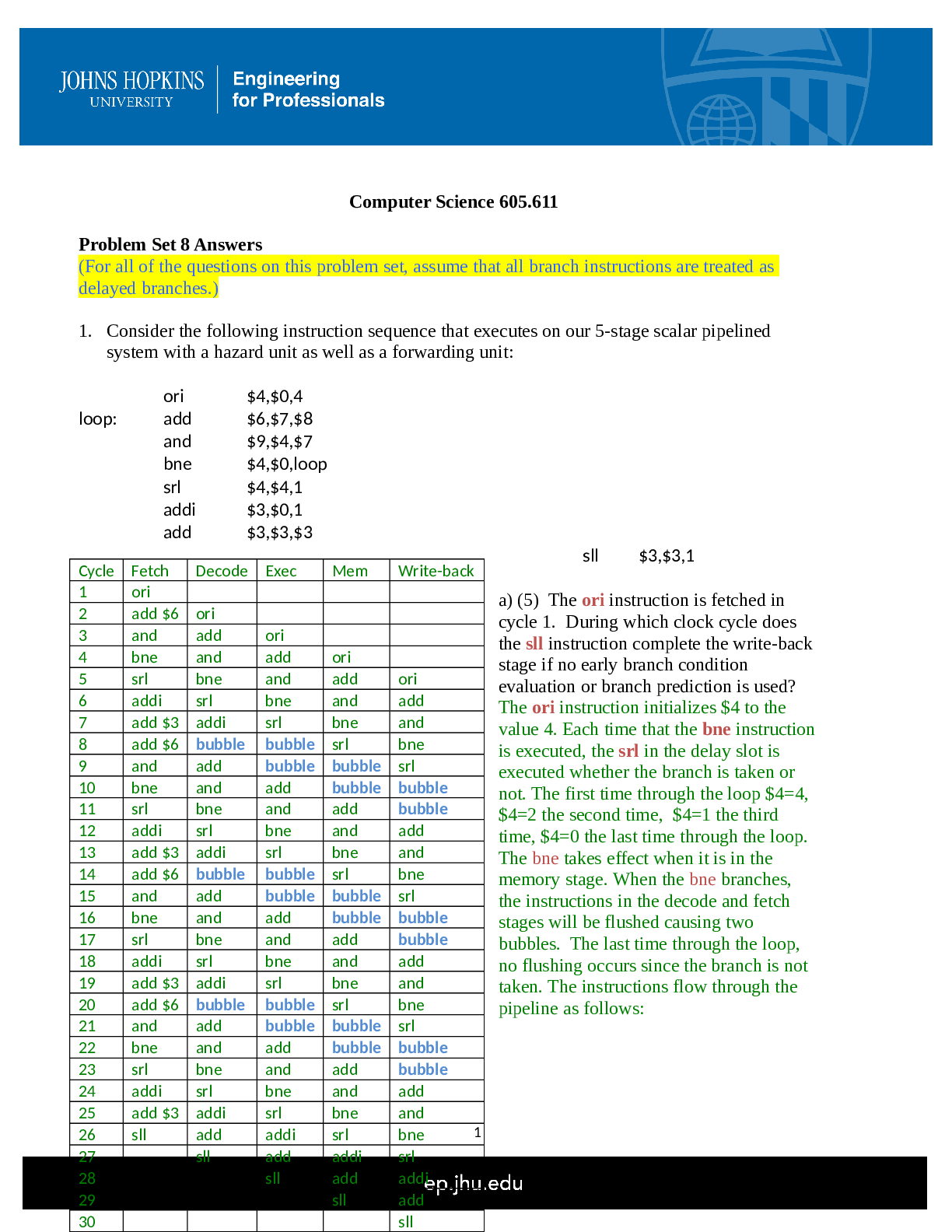Chemistry > QUESTIONS & ANSWERS > Exploration Sum: The Mole: Conversions, Mass Determination (All)
Exploration Sum: The Mole: Conversions, Mass Determination
Document Content and Description Below
Exploration Sum: The Mole: Conversions, Mass Determination, & Hydrates This Exploration contains targeted background content to prepare you for performing the exercises in this lesson. Learning Ob... jectives Define the concept of a mole. Distinguish between the terms: atomic mass, molecular mass, and molar mass. Convert between mass, moles, atoms, and molecules. Define and name hydrates by the number of moles of water held in a compound. Explore The Mole A single atom or a single molecule is so small that chemists are seldom able to work with one at a time. Even when weighing the smallest quantities of substances, numerous atoms and molecules are present. A unit of measure called a mole is used to combat this problem, allowing for successful work with defined quantities of atoms and molecules. *****A mole (n) is a unit of measure, describing the amount of a chemical substance that contains as many atoms, molecules, or formula units as there are in exactly 12 grams of pure carbon (12C). This amount of particles (6.022 × 1023) is referred to as Avogadro’s number. *****The atomic masses shown on the periodic table are the average masses of the various isotopes of each element, expressed in atomic mass units, or amu. The atomic mass unit was standardized to be equal to exactly 1/12th the mass of one carbon-12 (12C) atom; thus, one 12C atom has a mass of 12.000 amu. However, carbon has three isotopes (12C, 13C, and 14C) that contain six protons each, but the isotopes vary in the number of neutrons. The different number of neutrons leads to variation in the amu of each isotope. Since natural carbon (C) is composed of some of each isotope, it has an average atomic mass of 12.011 amu, as shown on the periodic table in Figure 1. What is the molar mass of MgCl2? 1. Identify the molar mass of each element in the compound using the periodic table. For MgCl2: Molar mass of Mg=24.305 g Mg=1 mole Mg Molar mass of Cl=35.453 g Cl=1 mole Cl 2. Add the molar mass of each element in the compound together. *****In the compound MgCl2 there is 1 mole of magnesium and 2 moles of chlorine: Molar mass of MgCl2 = 24.305 g/mol + (2×35.453 g/mol) = 95.211 g/mol The molar mass of MgCl2 is 95.211 g MgCl2: 95.211 g MgCl2 = 1 mole MgCl2. Example #2: Calculating the Number of Moles of a Compound in a Sample How many moles of MgCl2 are present in a sample weighing 12.5 g? 1. Calculate the molar mass of the compound using the periodic table. From Example #1, the molar mass of MgCl2 is 95.211 g/mol. 2. Use the molar mass to convert the mass (grams) of the sample to moles. The mass of the MgCl2 sample in this example is 12.5 g. 12.5 g MgCl2 * 1 mol MgCl2/ (divide) 95.211g MgCl2=0.131 mol of MgCl2 There are 0.131 mol of MgCl2 in 12.5 g of MgCl2 Example #3: Calculating the Number of Moles of an Element in a Sample How many moles of Mg are present in 12.5 g MgCl2? How many moles of Cl are present? 1. Calculate the molar mass of the compound using the periodic table. ***From Example #1, the molar mass of MgCl2 is 95.211 g/mol. 2. Use the molar mass to convert the mass (grams) of the sample to moles. ******From Example #2, there are 0.131 mol MgCl2 in a 12.5 g sample. 3. Calculate how many moles of each element are present in the moles of the compound. *****For MgCl2, calculate the number of moles of Mg present in 0.131 mol MgCl2: 0.131 mol MgCl2 *1 mol Mg/ (divide) 1 mol MgCl2 = 0.131 mol of Mg ******* Calculate the number of moles of Cl present in 0.131 mol MgCl2: 0.131 mol MgCl2* 2 mol Cl/ (divide) 1 mol MgCl2= 0.262 mol Cl There are 0.131 mol of Mg and 0.262 mol of Cl in 12.5 g of MgCl2. Example #4: Calculating the Number of Atoms of an Element in a Sample How many atoms of Mg are present in 12.5 g MgCl2? How many atoms of Cl are present? 1. Calculate the molar mass of the compound using the periodic table. ******From Example #1, the molar mass of MgCl2 is 95.211 g/mol. 2. Use the molar mass to convert the mass (grams) of the sample to moles. ******From Example #2, there are 0.131 mol MgCl2 in a 12.5 g sample. 3. Calculate how many moles of each element are present in the moles of the compound. ******From Example #3, there are 0.131 mol Mg and 0.262 mol Cl in 0.131 mol MgCl2.4. Apply Avogadro’s number to convert the moles of each element to numbers of atoms. # 0.131 mol Mg * 6.022 x10^23 atoms/(divide) 1 mol Mg = 7.89 x 10^22 atoms Mg # 0.262 mol Cl * 6.022x 10^23 atoms/ (divide) 1 mol Cl = 1.58 x 10^23 atoms Cl There are 7.89 x 1022 atoms of Mg and 1.58 x 1023 atoms of Cl present in 12.5 g of MgCl2. [Show More]
Last updated: 2 years ago
Preview 1 out of 10 pages

Buy this document to get the full access instantly
Instant Download Access after purchase
Buy NowInstant download
We Accept:

Reviews( 0 )
$7.00
Can't find what you want? Try our AI powered Search
Document information
Connected school, study & course
About the document
Uploaded On
Jul 28, 2022
Number of pages
10
Written in
Additional information
This document has been written for:
Uploaded
Jul 28, 2022
Downloads
0
Views
81














